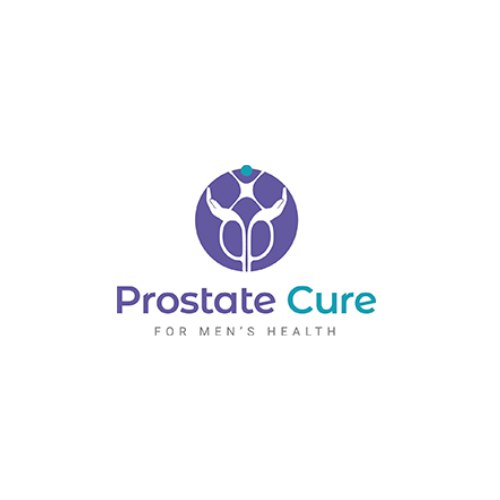Project Detail
Introduction Benign Prostatic Hyperplasia (BPH), also known as an enlarged prostate, is a common condition affecting men as they age. The prostate is a small, walnut-sized gland located below the bladder and surrounding the urethra, which is responsible for producing seminal fluid. BPH is a non-cancerous enlargement of the prostate gland that can cause urinary issues due to its pressure on the urethra. This article explores the causes, symptoms, risk factors, diagnosis, and treatment options for BPH. Causes of BPH BPH is primarily caused by the natural aging process and hormonal changes in men. As men age, the balance between testosterone and estrogen in the body changes, leading to the growth of prostate cells. The exact mechanisms behind prostate enlargement remain unclear, but hormonal factors, such as increased levels of dihydrotestosterone (DHT), play a significant role. Symptoms of BPH BPH symptoms generally stem from the enlarged prostate compressing the urethra, leading to difficulties in urination. The severity of symptoms can vary widely, but they typically fall into two categories: Obstructive Symptoms: Difficulty starting urination (hesitancy) Weak urine stream Dribbling at the end of urination Incomplete emptying of the bladder Irritative Symptoms: Frequent need to urinate, especially at night (nocturia) Urgent need to urinate Painful urination (dysuria) Incontinence (leakage of urine) Not all men with BPH will experience significant symptoms, and in some cases, symptoms may improve over time. However, untreated BPH can lead to complications such as urinary tract infections (UTIs), bladder stones, and kidney damage. Risk Factors Several factors increase the likelihood of developing BPH: Age: The risk of BPH increases with age, particularly after 50. Family History: Men with a family history of prostate problems are more likely to develop BPH. Diabetes and Heart Disease: These conditions, along with certain medications for high blood pressure, can increase the risk of BPH. Lifestyle Factors: Obesity and a sedentary lifestyle may also contribute to the development of BPH, while regular exercise is associated with a reduced risk. Diagnosis of BPH To diagnose BPH, healthcare providers typically start with a detailed medical history and physical examination, including a digital rectal exam (DRE) to assess the size of the prostate. Additional tests may include: Urine tests: To rule out infection or other conditions. Prostate-specific antigen (PSA) test: To measure levels of PSA, which can be elevated in BPH, prostate cancer, or other conditions. Uroflowmetry: To measure the speed of urine flow. Post-void residual (PVR) measurement: To determine the amount of urine left in the bladder after urination. Cystoscopy: A procedure to look inside the bladder and urethra for any blockages or abnormalities. Treatment Options for BPH Treatment for BPH depends on the severity of symptoms and their impact on the patient’s quality of life. Options range from lifestyle changes and medications to surgical interventions. Lifestyle Changes: Reducing fluid intake before bedtime Limiting caffeine and alcohol, which can irritate the bladder Regular exercise Bladder training techniques Medications: Alpha-blockers: Medications like tamsulosin and alfuzosin relax the muscles of the prostate and bladder neck, making it easier to urinate. 5-alpha-reductase inhibitors: Drugs such as finasteride and dutasteride reduce the size of the prostate by inhibiting the conversion of testosterone to DHT. Combination therapy: A combination of alpha-blockers and 5-alpha-reductase inhibitors may be prescribed for more severe symptoms. Phosphodiesterase-5 (PDE5) inhibitors: These drugs, like tadalafil, can improve urinary symptoms and are sometimes used if the patient also has erectile dysfunction. Minimally Invasive Procedures: Transurethral resection of the prostate (TURP): A common procedure in which a portion of the prostate is removed to relieve pressure on the urethra. Laser therapy: Techniques like holmium laser enucleation of the prostate (HoLEP) vaporize or remove excess prostate tissue. Urolift system: This technique involves placing implants to lift and hold the enlarged prostate tissue away from the urethra, relieving obstruction without cutting or removing tissue. Prostate artery embolization (PAE): A newer, non-surgical procedure that reduces blood flow to the prostate, causing it to shrink. Surgical Options: Simple prostatectomy: In more severe cases, surgery to remove part or all of the prostate may be necessary. This option is generally reserved for men with very large prostates or those with complications. Prognosis and Management BPH is a manageable condition, and most men can live normal lives with appropriate treatment. Early diagnosis and treatment are important to prevent complications. Regular follow-ups with a healthcare provider help monitor the condition and adjust treatment as necessary. Conclusion Benign Prostatic Hyperplasia is a common condition that can significantly affect a man’s quality of life. With advancements in medical treatments and minimally invasive procedures, men have a wide range of options to manage their symptoms and maintain their well-being. Consulting with a healthcare provider at the onset of symptoms is crucial to developing an effective treatment plan.
Find Exactly What You Need :
Other Related Classified Of Health & Fitness

Discover the best dermatologists near you at the California Dermatology Institute, where quality care meets expertise. Our highly trained dermatologis...
- Health & Fitness
 India
India- Joined: 22-Oct-2024
- Post ID: 53890
- View Details

Aloe Vera: medicinal plants Renowned for its soothing qualities, aloe vera is commonly used to heal burns, alleviate skin irritations, and support di...
- Health & Fitness
 India
India- Joined: 22-Oct-2024
- Post ID: 53886
- View Details

Libera Mentis provides expert counseling services in Croydon and Surrey, including anxiety and trauma counseling. Our experienced counselor therapis...
- Health & Fitness
 India
India- Joined: 22-Oct-2024
- Post ID: 53877
- View Details

Macánta Nutrition's Collagen Peptides Powder is crafted from high-quality, grass-fed bovine collagen, delivering a potent blend of Type I and Type II...
- Health & Fitness
 India
India- Joined: 22-Oct-2024
- Post ID: 53866
- View Details

Aloe Vera: medicinal plants Renowned for its soothing qualities, aloe vera is commonly used to heal burns, alleviate skin irritations, and support dig...
- Health & Fitness
 India
India- Joined: 22-Oct-2024
- Post ID: 53853
- View Details
.png)

